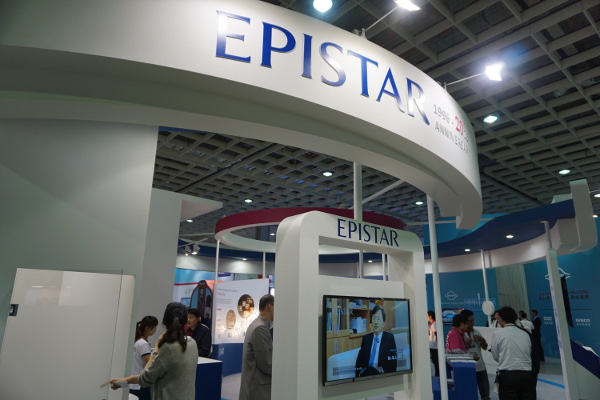Taiwan-based LED chip giant Epistar’s revenue in August stood at NTD 2.332 billion (USD 77.59 million), with a rise of 3.7% MoM (5.3% YoY). It has hit a new high in the past 28 months. The company explained the fully-utilized capacity for blue LED manufacturing and the AlInGaP demand driver from the horticultural lighting market accounted for the growth, despite an overall slide of 0.3% YoY in the consolidated revenue of 2017 (accumulated until the end of August).
 |
|
(Image: LEDinside) |
Rumblings about Micro LED display demos for wearable devices have been circling in the industry. Epistar is the world’s largest AlInGaP red LED supplier and is also one of the only two companies (together with Osram) able to provide epi-wafers for all RGB LEDs. Given that Apple’s been proactively developing Micro LED and it is said to begin a pilot run by the end of this year, Epistar is believed to benefit in the long run upon Micro LED being mass produced.
A LED chip normally consist of a substrate with a layer of epitaxy on the top, while a Micro LED display is manufactured by separating epitaxial layers of micron-sized RGB LEDs from their substrates and transfer them onto a glass receiver substrate to connect with the circuits. The high density of Micro LED matrix creates high-resolution images, which makes some believe Micro LED can replace OLED due to its high reliability and efficiency. The structure of a Micro LED display is also simpler than that of an OLED one.
So far manufacturers are still stuck with the technology to efficiently transfer chips of all three colors onto one substrate. PlayNitride, partially invested by Epistar, has lately reportedly improved its mass transfer technology, which suggested more Micro LED demos would come out and the industry is counting down towards the mass production of Micro LED.
Epistar’s capacity for blue LED is fully utilized and the orders for AlInGaP LED from horticultural lighting partners is also on the rise, leading to a record-setting performance in August after 28 months. The chip maker’s revenue in September is estimated to remain stable as well. Its Q3 performance might surpass that of Q2 and could drive more growth in the gross margin and consolidated revenue.
In addition, Epistar is also rumored to earn VCSEL wafer orders from Taiwanese laser diode packagers and manufacture the wafers with equipment originally intended for AlInGaP LEDs. If the rumor is true, it might just confirm Epistar’s penetration in the space of 3D sensing and biometric sensors.












